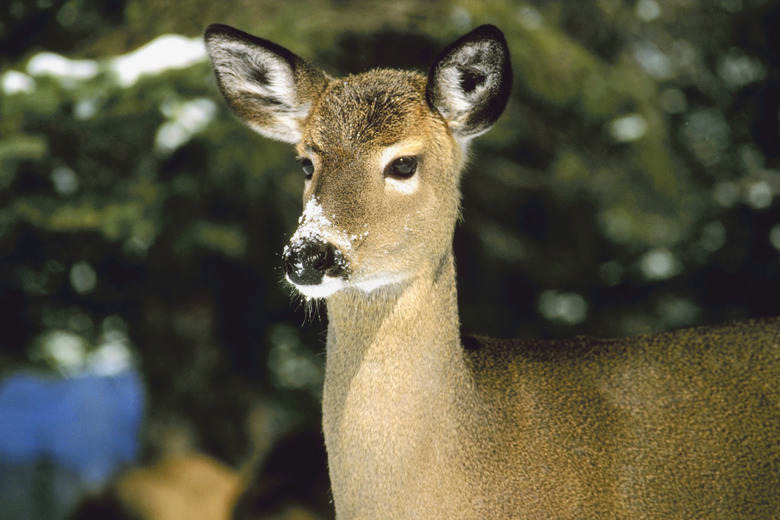Can You Use Blood Meal To Repel Deer From Eating Plants?
White-tailed deer have become a common sight in many rural and suburban areas. They're not hunted as frequently as they once were and they've found abundant food sources in developed areas, allowing their numbers to swell. In some areas, deer populations may be as large as 100 deer per square mile. This means a lot of hungry deer and not enough food to go around. If deer are eating your garden, blood meal might deter them, although you'll probably have to use other strategies, as well.
Effectiveness
Step 1
Keeping the deer out of your yard will probably take several strategies, including the use of repellents, scare tactics and fencing. Blood meal is just one possible option. Blood meal is a high nitrogen fertilizer made from dried cows' or pigs' blood. It has an earthy, slightly unpleasant smell that can deter deer. Its effectiveness depends, though, on when and how it is applied and the current environmental conditions. Regular blood meal is only effective when it is dry and must be reapplied frequently. When deer populations grow high or food is scarce, the deer are less likely to be deterred and will eat anything.
- White-tailed deer have become a common sight in many rural and suburban areas.
- Keeping the deer out of your yard will probably take several strategies, including the use of repellents, scare tactics and fencing.
Method
Step 1
If you opt to use blood meal, place it in small, plastic containers and set them around the plants. For example, fill 1-cup containers with 1/2 cup blood meal and place three or four around a 10-foot tree. You can also fill mesh bags or old nylon socks with blood meal and tie them from tree or shrub branches. The containers keep the blood meal drier and also prevent overfertilizing. Blood meal's high nitrogen content means that it creates ammonia as it decomposes. If you apply too much blood meal to the soil, you'll burn the plants. Blood meal, like any nitrogen fertilizer, can also encourage leafy growth instead of fruiting. Spread it around vegetable plants only after they've started producing flowers and fruit. Once the blood meal loses its odor, toss it on the compost pile or spread it sparingly around the yard.
- If you opt to use blood meal, place it in small, plastic containers and set them around the plants.
Substitutions
Step 1
Regular blood meal is designed to be used as a fertilizer and has its limitations for deterring deer. Products designed as deer repellents are much more effective. These products contain blood meal mixed with oil and can be sprayed directly on plants. The oil helps the blood meal adhere to the plants so it doesn't have to be reapplied as frequently. Human hair, strongly scented soap, rotten eggs and even animal urine can also be used as deer repellents. Another option is to replace the most vulnerable plants with plants that are deer resistant.
Cautions
Step 1
Use blood meal in the garden with caution, especially if you have pets or kids. Blood meal is an organic, natural fertilizer, but it can cause diarrhea, gastrointestinal blockage and even death if consumed in large quantities. Dogs like the taste of blood meal and will lick it off the ground or off of plants.
- Regular blood meal is designed to be used as a fertilizer and has its limitations for deterring deer.
